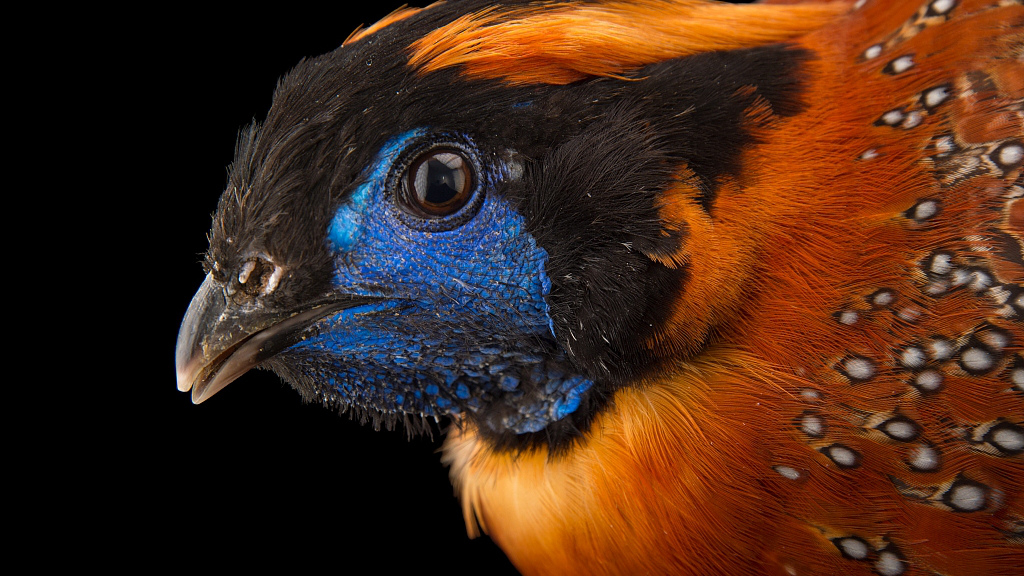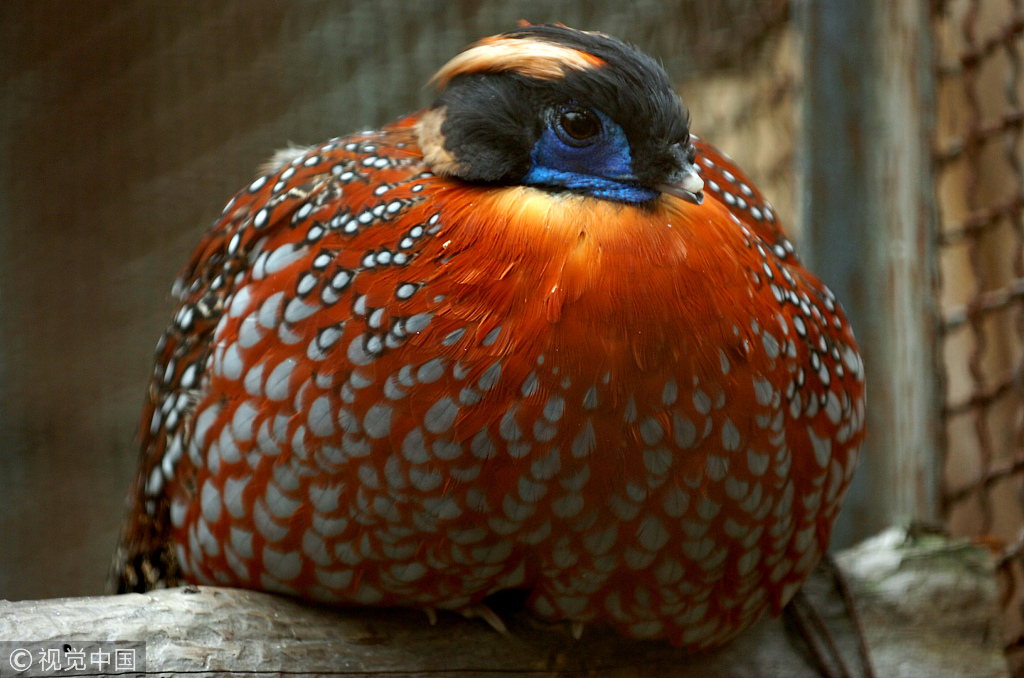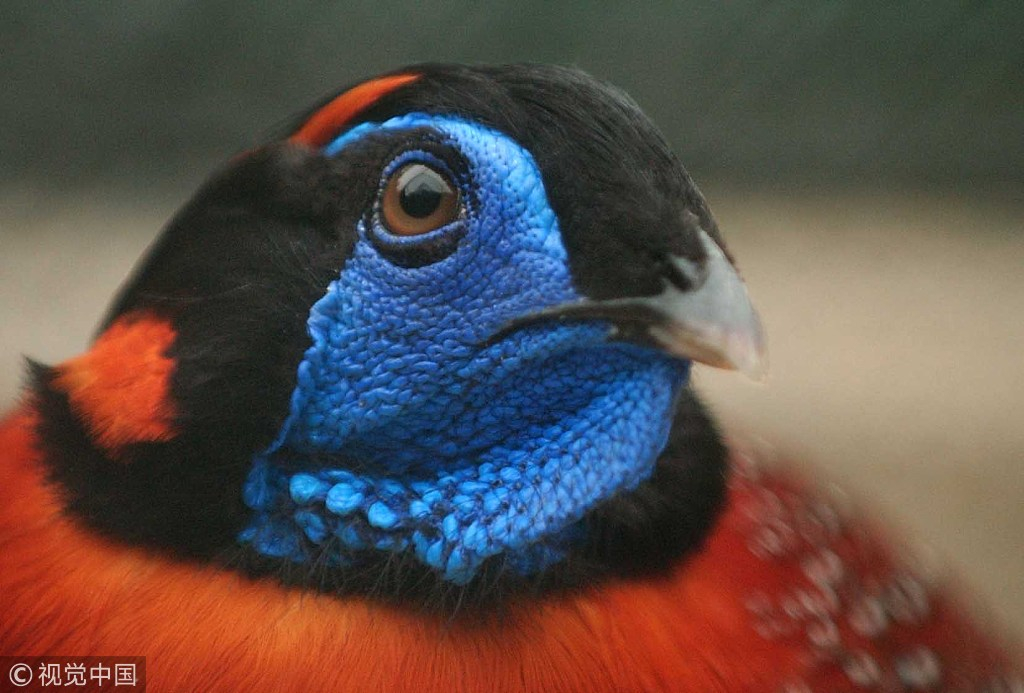
Animal
13:03, 26-Jan-2019
Temminck's tragopans caught on camera foraging in winter snow
CGTN
00:37

Flocks of Temminck's tragopans were recently caught on camera foraging in winter snow in the Jinfo Mountain National Nature Reserve, southwest China's Chongqing Municipality.
The colorful pheasants, believed to be at risk of extinction in the wild, are under second-class protection in China.

A Temminck's tragopan in Pengyuan Park, Xuzhou, Jiangsu, E China. /VCG Photo
A Temminck's tragopan in Pengyuan Park, Xuzhou, Jiangsu, E China. /VCG Photo
The Temminck's tragopan is a medium-sized pheasant in the genus Tragopan. They mainly feed on berries, grass and plants and live in forests with altitudes of 1,000 to 3,500 meters.
The male is a stocky red-and-orange bird with white-spotted plumage, black bill and pink legs and the female is a white-spotted brown bird with blue circular eye skin.

Close-up photo of a Temminck's tragopan. /VCG Photo
Close-up photo of a Temminck's tragopan. /VCG Photo
"Temminck's tragopans like to forage in winter and they form flocks in two seasons, namely spring and winter," said Zhou Hongyan, an engineer with the Scientific Research Monitoring Center of Administration Bureau of the reserve.
As the Temminck's tragopan is very alert, easily frightened and normally solitary, the nature reserve installed infrared monitoring equipment two years ago at the places frequented by the birds to record the real time conditions in these regions around the clock.

A golden pheasant. /VCG Photo
A golden pheasant. /VCG Photo
"The golden pheasant has longer corolla and tail, while the Temminck's tragopan has a shorter tail and brighter feather. For Temminck's tragopan, the further distinction has to be made between male and female," said He Shihua, a forest ranger.
In recent years, the Jinfo Mountain National Nature Reserve also sighted golden pheasants and other precious pheasants. Many of them were never recorded in Chongqing.
Currently, the nature reserve has installed hundreds of infrared cameras in de-populated zones and studies wildlife habitats in order to better protect endangered species.

SITEMAP
Copyright © 2018 CGTN. Beijing ICP prepared NO.16065310-3
Copyright © 2018 CGTN. Beijing ICP prepared NO.16065310-3